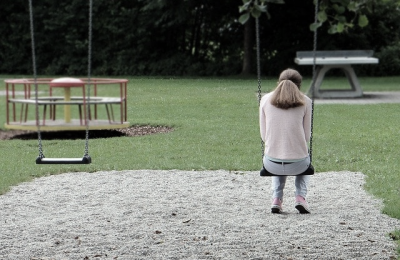What is Negativity Bias?
We all have biases that we are unaware of, ways of thinking which are skewed and yet we don’t perceive them as such. One example is negativity bias which is the tendency to pay more attention to the negative things that happen than to the positive. Most of us will remember, often for years, a negative comment made about us, yet, we cannot recall a single compliment.
Why Do We experience it?
Negativity bias makes sense from an evolutionary perspective, early humans navigating a much more dangerous world would need to pay attention to anything ‘negative’ in the environment. If early humans gave the same amount of attention to both positive and negative stimuli, they might get distracted by an ebullient flower and fail to notice a lion manoeuvring into a pre-pounce position. Paying more attention to negative stimuli might have saved lives at one time, but in a far less dangerous and much more predictable world, negativity bias serves to make us just a little less content. If something goes really well at school or at work and you feel good about it, that feeling might last for a few hours. If you make a mistake, or you receive some negative feedback about your work, that feeling will likely last much longer. In an evolutionary context, negativity bias is a helpful default, in a modern world, however, it doesn’t serve us well.
How to Shift From Negative to Positive
Research
Studies have shown that people spend a lot more time thinking about negative events than positive ones. They are also better at remembering negative information and are more likely to pass it on. New research suggests that this negativity bias may depend on age. The younger you are, the better you are at attending to and remembering negative information, whereas older adults pay more attention to positive information and are better at remembering it. This phenomenon is known as the positivity effect.
The positivity effect is a pattern whereby people shift from a negativity bias early in life, to a positivity bias in middle-age and beyond. We don’t know exactly why or how this happens, but it may be linked to future thinking and how far ahead we look.
Shifting Time Horizons
Shifting time horizons may affect what we focus on. Time horizons are the end point of our future thinking. When we are young, time horizons are vast, far-away concepts, but as we age they become much closer and more limited. This shifting time horizon may encourage us to focus on the here and now, on more immediate goal-achievement and things that can make us satisfied and fulfilled in the present. So narrow in on the near future and the current to increase positivity and shift from a negative bias.
Cognitive Load Reduces the Positivity Effect
Studies have found that the positivity effect is diminished by cognitive load. Cognitive load describes the amount of processing being done by your working memory. When your working memory is busy on cognitive tasks, your ability to pay attention to the positives is reduced. So, take a break, take in your surroundings and don’t think too much to make the most of the positive elements in your environment.
Mindfulness Can Increase Optimism
There is evidence that mindfulness can reduce negativity bias and increase optimism. This isn’t surprising, given that mindfulness helps us to focus on the present. Mindfulness is a process which stops us thinking too much about the future (or the past) and helps us to focus on appreciating what’s happening now. Mindfulness can therefore, help to reduce negativity bias by increasing positive judgements and improving optimism.
| 3 Steps to Increase Positivity |
|---|
| Step 1 | Think About Now |
| Step 2 | Reduce Cognitive Load |
| Step 3 | Be More Mindful |
Step 1 | Think About Now
Over the next week or so try to pay more attention to what’s happening now. When you notice yourself engaging in future thinking, bring yourself back to a shorter time-frame, reduce your time horizon. Instead of considering a life-time, you could consider the next decade. This will help you focus on increasing satisfaction with more immediate goals. Long-term goals are great, but make sure you have some shorter-term goals too.
Step 2 | Reduce Cognitive Load
You don’t necessarily want to reduce your cognitive load, when you need to work, you need to work. But being aware that cognitively demanding tasks will reduce your ability to find the positives may be helpful. If you are busy completing tasks, this isn’t the time to take stock of current or future life events or activities, this isn’t a good time to weigh the negatives and positives. Make an effort to separate these two tasks. If you are in the process of planning or writing a piece of work, don’t let evaluative thoughts about how well things are going more broadly sneak in, the negativity bias will but there to bite you.
Step 3 | Be Mindful
Finally, be more mindful. This will help you to focus on the present, which may really shift your negativity bias to positive. Mindfulness also helps you to:
- become more self-aware
- feel calmer and less stressed
- regulate emotions
- cope with difficult feelings and thoughts
A huge amount of evidence now exists in support of the benefits of mindfulness in improving wellbeing and reducing anxiety and depression, so it’s certainly worth your effort. There is a helpful guided mindfulness meditation by Dr Julie Smith available here.
Gratitude
Whilst there is a lack of studies exploring the effects of gratitude on negativity bias, increases in gratitude have been shown to reduce symptoms of depression and increase measures of happiness, positive mood and life satisfaction. To increase feelings of gratitude, try keeping a gratitude journal for the next three weeks.
Gratitude Journal
Simply write down (or share with a friend) three things that you are grateful for. Do this every day for three weeks and you will shift your mindset to notice more positives.


